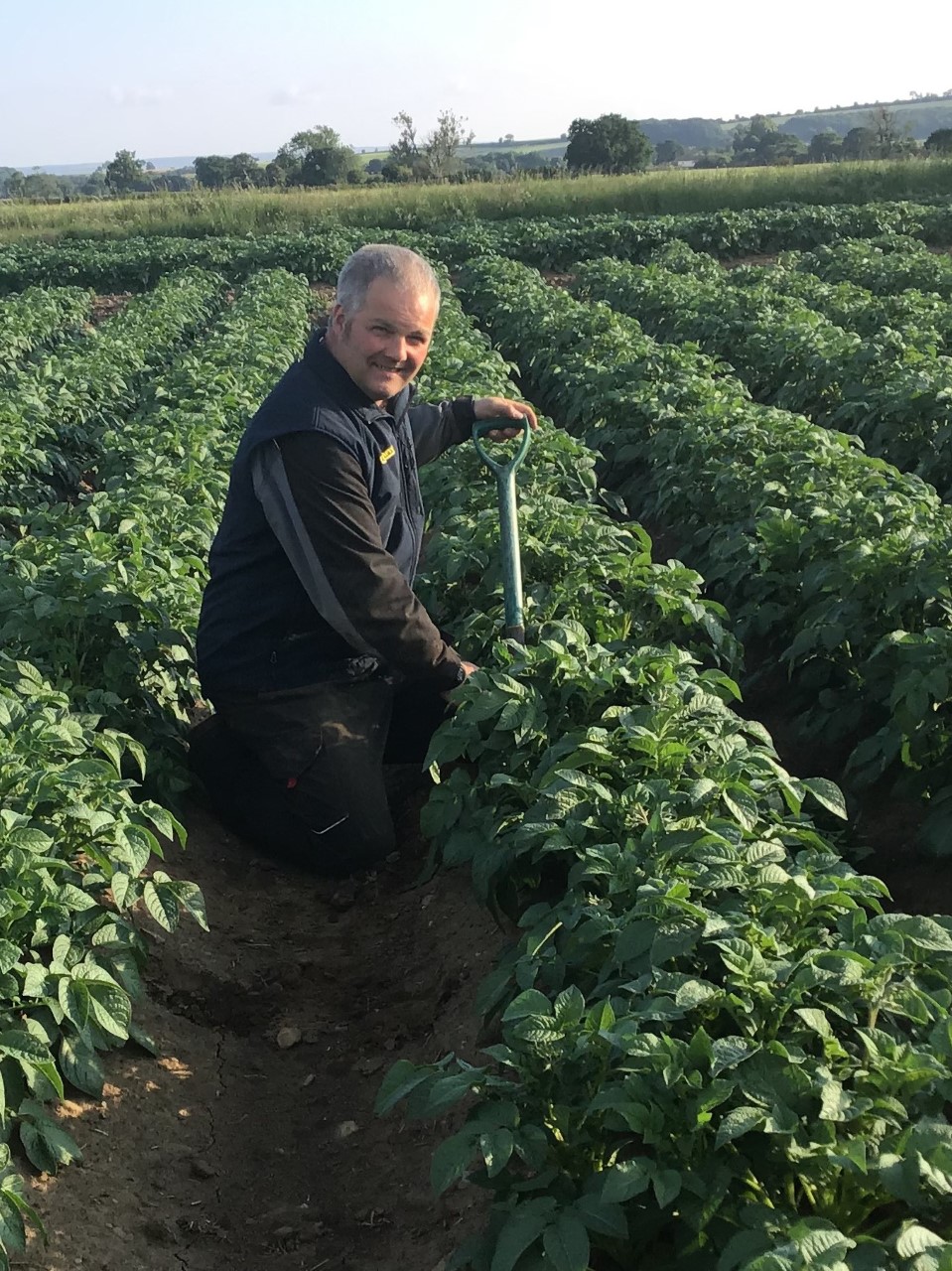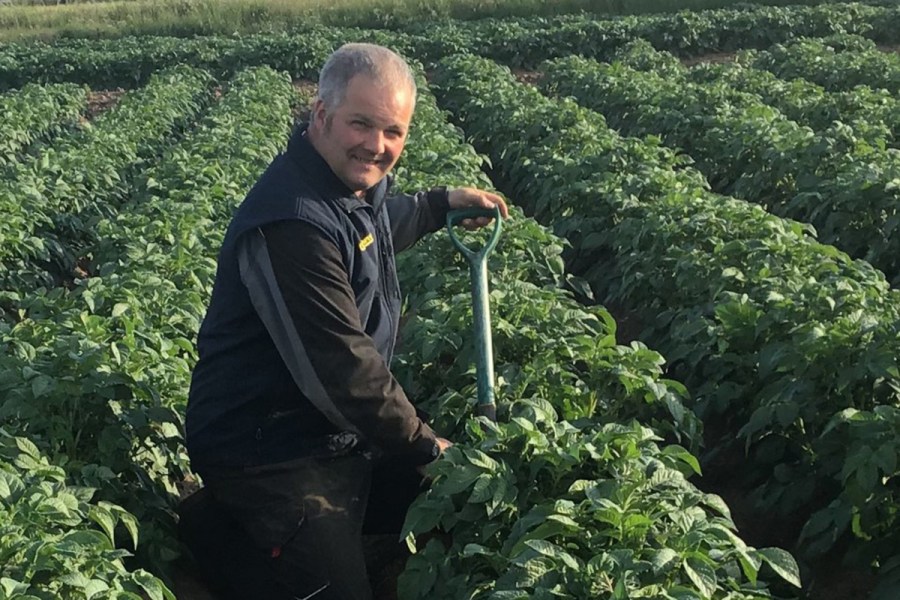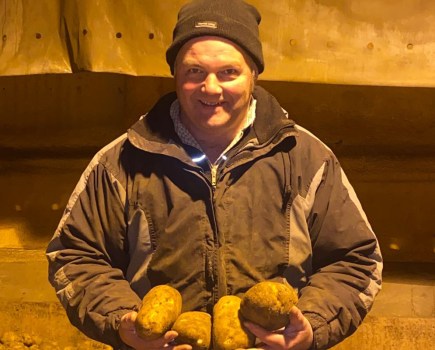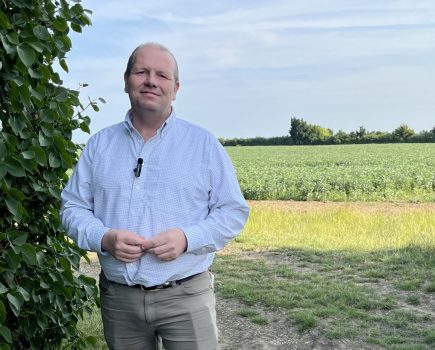
As farmers we’re the bottom rung of the ladder and carry huge risk and responsibility as an everyday noose, so for regenerative potatoes to stand a chance of success it certainly needs customer buy-in. Our buyers can’t just expect the same top-quality produce with the added bonus of a valuable sales tag at the cost (and risk) of the supplying farmer!
In my view, zero soil movement in potato growing is an unrealistic ideal – we still need to harvest the crop without damage. Even the most militant of direct drilling, regen combinable crop farmers still put a coulter of some kind in the ground, at a depth commensurate with the requirement of the seed being planted. So I reason that if we apply the same theory to potatoes, then burying the seed under an inch or so of soil ought to be a decent start. So, nudged by a major customers’ future target, I set up a small trial in 2021.
The fundamentals of regen ag are to move less soil, and use less chemicals, so the scene was set. Our aim was a maximum of 15cm (6”) bed depth (normal here is 25cm) and to minimise any inputs. So we didn’t apply herbicides, nematicides or seed treatments, and used a reduced amount of N. However, the big challenge under this regime was to maintain quality.
We planted the crop in late June (too late) so didn’t expect commercial yields (hence only 50kgN/ha was applied). The seed tubers were buried deep enough to have 2.5cm of soil over them and were then covered by a variation of means – no extra cover (just 2.5cm of soil); straw cover; companion crop sown with straw on top; straw with a companion sown into it; and a companion crop only (no straw).
At 25% canopy, 50kgN was applied using liquid N and the crop was blight sprayed as normal. So what did we see?
Of all the treatments in the trial, soil only was better than expected. There were more greens but faster emergence and less slugs than the other options.
Straw speeded the germination but restricted emergence and prevented rainfall, when under about 5mm, from getting to the roots. The wet straw harboured slugs and, in short, it was expensive and impractical.
Any mixture of straw and companions resulted in very poor-quality tubers and low yield – probably through competition for light, nutrients and water, as well as acting as a host for pests.
Our companion was sown too thick and was too tall but made practical and financial sense. It shaded the crop from both light and fungicides, and competed for light, water and nutrients. We found oats may have had an allelopathic effect on the potatoes and yellow mustard may have activated free-living nematodes at a susceptible time. Beans were outcompeted so we conclude a non-climbing clover or vetch is probably a better choice of companion. More work is needed on this front.
So what have we learnt? Regenerative potatoes have the potential to reduce costs, reliance on pesticides and our carbon footprint. It will inevitably suit some varieties, soil types, markets, and farming systems better than others, but there’s huge potential.
A 40-50% reduction in cultivation depth reduces cost and increases capacity significantly – faster working speed, less fuel, less time and less wear. Using a larger grade size on clod separators is very possible if stone levels are low.
Cover crops are essential and shouldn’t be too thick. They have more potential to control nematodes and reduce cultivation than almost anything else in the system.
Physical OM in the planted row is a huge help in reducing green potatoes. We found biostimulants (rather than azoxystrobin) in-furrow are very helpful in reducing rhizoctonia, black dot and promoting root health.
Quality of the crop and the practicality of producing it are of paramount importance. So the plough is not a ‘must get rid’ – quite the opposite. At shallower depths the plough assures a depth of soil not possible with tines on some soil types – but it’s important not to bury the OM in a layer.
Muck, slurry, digestate, compost etc have potential to further reduce fertiliser requirements while reducing synthetic inputs. Low levels of chopped straw cover may have potential, but it needs care because of the risk from slugs. Removal by the potato harvester is possible if the straw is short and evenly applied. The application is the issue – cost, traffic, and timing.
Companion crops to cover soil at low levels probably have the most potential for protecting regen potatoes, while being practical to apply and affordable. The compromise is broadleaf weed control and slug control. Again, more work required!
The possibilities are endless. Reducing soil depth is arguably the biggest hurdle, but the one from where the most benefit stands to be gained, particularly from a cost saving and carbon perspective. I’ll have another go this spring.
Andrew Wilson is a fourth-generation tenant of the Castle Howard Estate in North Yorkshire.
He has a strategic approach to direct drilling on his varied soil types and grows a wide variety of crops. He’s passionate about the potato industry and having been utilising cover crops to reduce cultivation and chemical use since 2011, dipped his toe in the water of regenerative potatoes in 2021.




